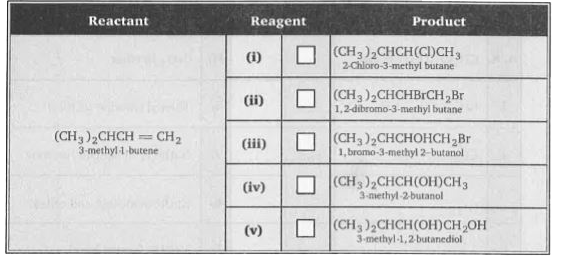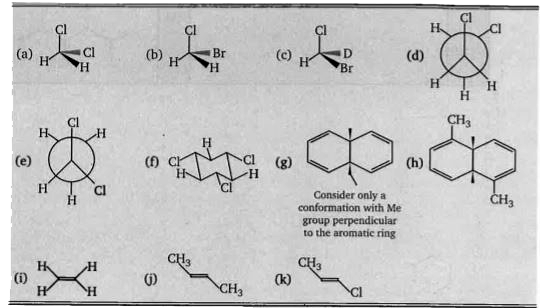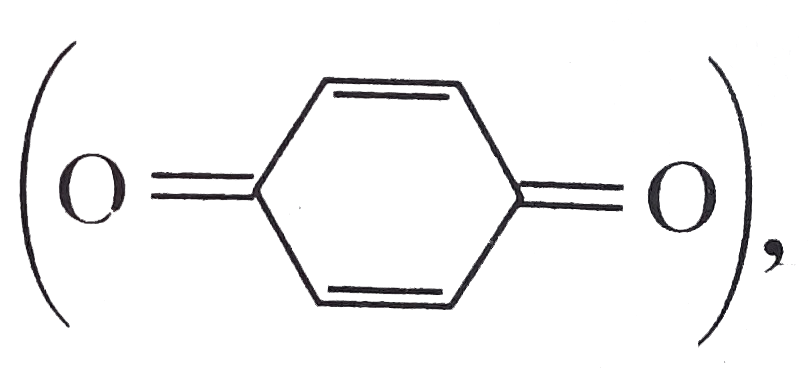Reactant P gives products Q of R.

The possible reagents are :
(I) 2Na/liq. (II) (quinoline) (III)
The correct statement with respect to the above conversion is/are :Solution in Kannada
Q is obtained on treatment with reagent (I)
R and Q are obtained on treatment with reagent (II)
R is obtained on treatment with reagent (I)
R is obtained on treatment with reagent (II)
The correct Answer is:C
Reagent (I) give trans product. Reagent (II) and (III) give cis-product.
Topper's Solved these Questions
Similar Questions

In each reagent box write a letter designating the best reagent and condition selected from the above list of reagents.
 04:05View Solution
04:05View SolutionNumber of chiral isomers are:
 View Solution
View SolutionThe major product obtained in the following reaction is : overset((i) CHCl_(3)//KOH)underset((ii) Pd//C//H_(2)) to
01:58View SolutionGive the products of
a. p-Benzoquinone

and
b. PhCH=CH−CHO with
i. H2+Pt
ii. H2+Pd−C(1atm)
iii. LAH
iv. NaBH4
v. Zn+HAc
vi. NH2NH2+KOH+glycol+Δ
vii. HI+P
viii. LAH+AlCl3
ix. (Me2CHO−)3Al+Me2CHOH
x. LiorNa,liq.NH3+EtOH
xi. Na+EtOH02:12View SolutionThe reduction of 4−octyne withH2 in the presence of Pd/CaCO3− quinoline gives-
02:12View Solution[Pd(NH_(3))_(2)(SCN)_(2)] and [Pd(NH_(3))_(2)(NCS)_(2)] are :
View SolutionReactant P gives products Q or R. The possible reagents are: (I) 2Na//liq. NH_(3) (II) H_(2)//Pd//CaCO_(3)("quinoline") (III) 2H_(2)//Pd//C The correct with respect to the above conversion is/are:
01:58View SolutionH3C−O∣∣C−COOH(i)NH3−−−−−−→(ii)H2/Pd(A). Identify (A)
05:04View SolutionThe reduction 4−octyne withH2 in the presence of Pd/CaCO3− quioline gives-
View SolutionGive the products with their stereoisomers, if any.
a) Me−≡−Me(Na)/liq.NH3−−−−−−−−−→C2H5OH
b) Me−≡−MeH2/Poisoned Pd−−−−−−−−−→
 01:21View Solution
01:21View SolutionThe correct sequence of reagents from those listed below for the following conversion is I. NaNH_(2) II. Br_(2) III. H_(2)//Pd-C ,quinolone IV. H_(3)O^(+)
01:52View SolutionConsider the complexs.
(i) [Pd(NH3)2ClBr]
[Pd(NH3)2Cl2]
[Pd(en)Cl2]
[Pd(en)ClBr]
[Pd(en)2]Cl2 (en = ethylenediamine)
The total number of geometrical isomers of (a) is same as the total number of geometrical isomers ofView SolutionThe reduction of 4 - octyne with H_(2) in the presence of Pd //CaCo_3 quinoline gives
View SolutionCH3COCI+H2Pd−−→CH3CH2OH
Pd/BaSO4−−−−−−−−→quinoline CH3CHO here quinoline acts as01:31View SolutionComplete the following: (i) 2-butyne Pd−CacO3−−−−−−→? (ii) CaC2H2O−−→?
01:37View SolutionCH_(3)COCl+H_(2)overset(Pd//BaSO_(4))underset("quinoline")rarrCH_(3)CHO. Here quinoline acts as
02:12View Solution

